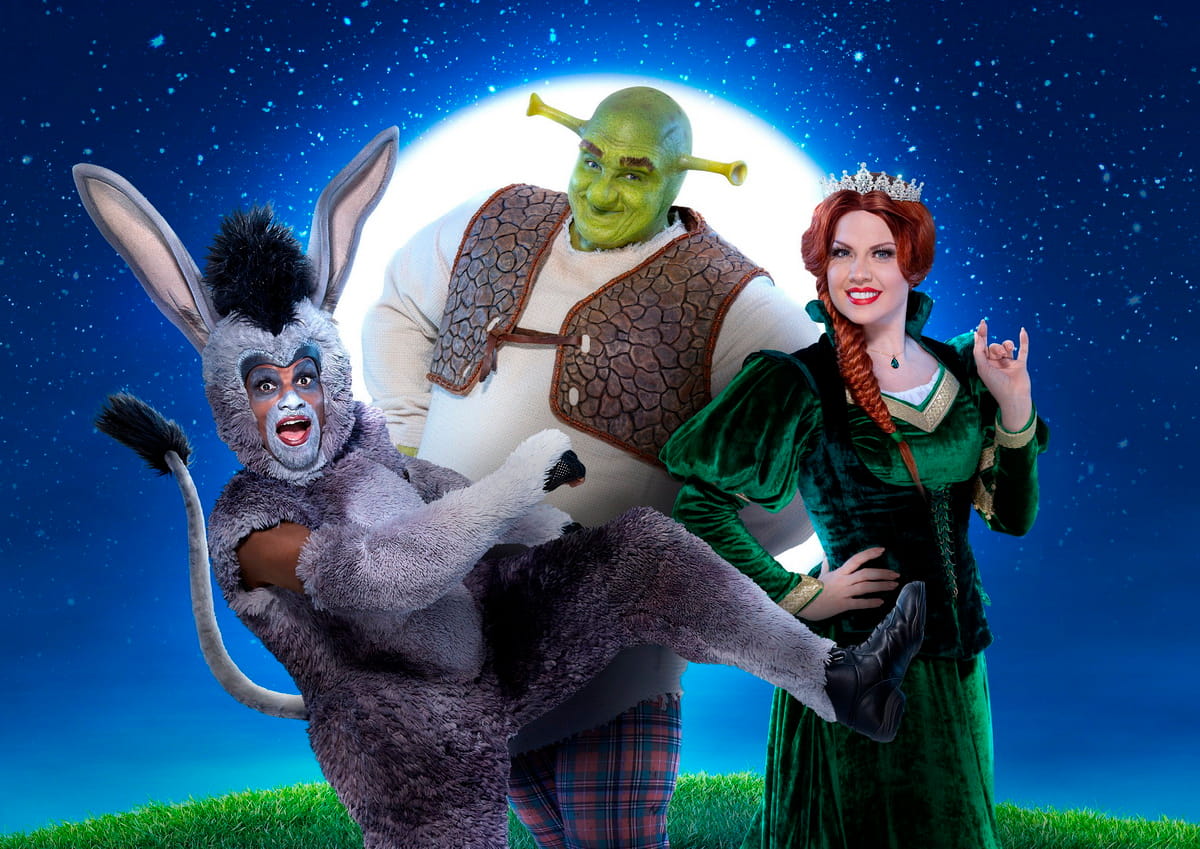Shrek The Musical, a theatrical spectacle, debuted on Broadway in December 2008, translating the charm of the 2001 animated film into a live-action extravaganza. The musical was an ambitious project for DreamWorks Theatricals, with a production cost of $25 million, making it one of the most expensive Broadway shows at its time.
It featured elaborate set designs, including a 25-foot dragon puppet, and over 60 scene changes, a testament to its technical and artistic prowess. This musical not only captured the essence of the original film but also set new standards in theatre production. Exploring the fun facts about Shrek the Musical reveals the depth and creativity behind this groundbreaking theatrical achievement.
1. The Magical Transformation: Fiona’s On-Stage Quick Change
Fiona’s transformation in “Shrek The Musical” involves careful staging, including dim lighting and strategic positioning, often with body doubles. This, combined with makeup, prosthetics, and a bulky ogre costume, enables the seamless on-stage change from human to ogre form.
These elements of theatrical makeup and costume design are essential for the storytelling and visual impact of the musical.
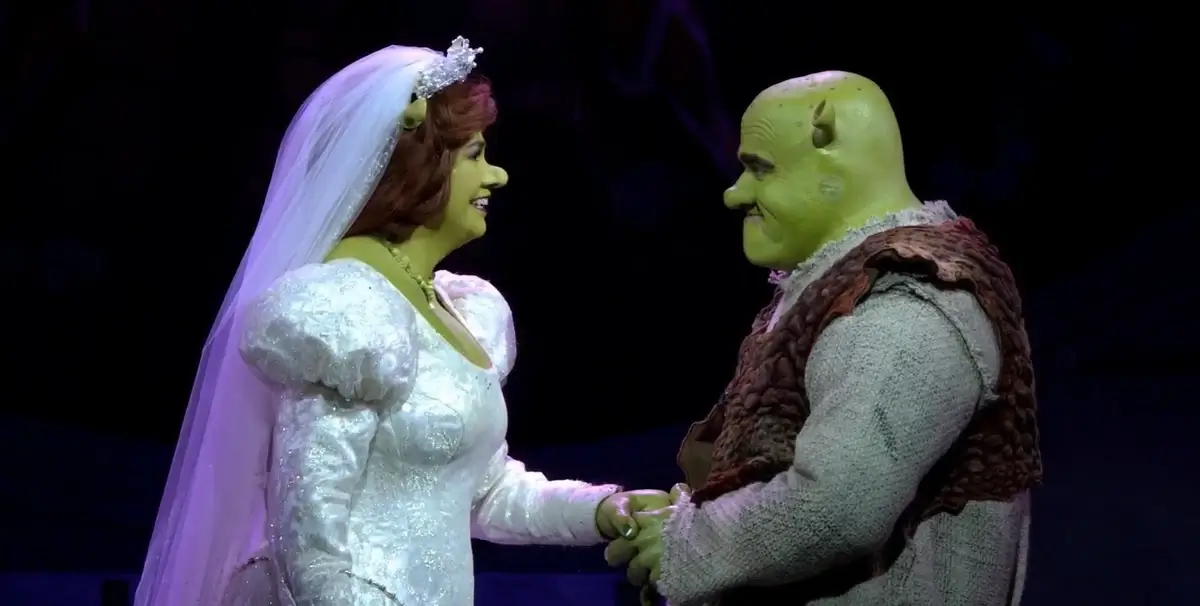
Image: iFunFact
2. DreamWorks’ First Theatrical Leap: Adapting Shrek to Stage
When DreamWorks decided to adapt “Shrek” for the stage, it marked the animation studio’s first foray into Broadway. This adaptation process, which started in 2002 and culminated in the 2008 Broadway opening, involved transforming the animated narrative into a script suitable for live performance.
The challenge was to maintain the essence and humor of the film while adapting it to the dynamics of live theatre. The success of this transition set a precedent for future film-to-stage adaptations.
3. A Record-Breaking Fairy Tale: The Costliest Costumes in Broadway History
The production of “Shrek The Musical” was one of Broadway’s most expensive, costing an estimated $25 million. This budget encompassed the intricate costume designs by Tim Hatley, crucial for the show’s visual appeal and authenticity.
Hatley’s work, notably for characters like Shrek, involved detailed prosthetics and a suit to realistically portray an ogre’s physique, earning acclaim and a Tony award for Best Costume Design.
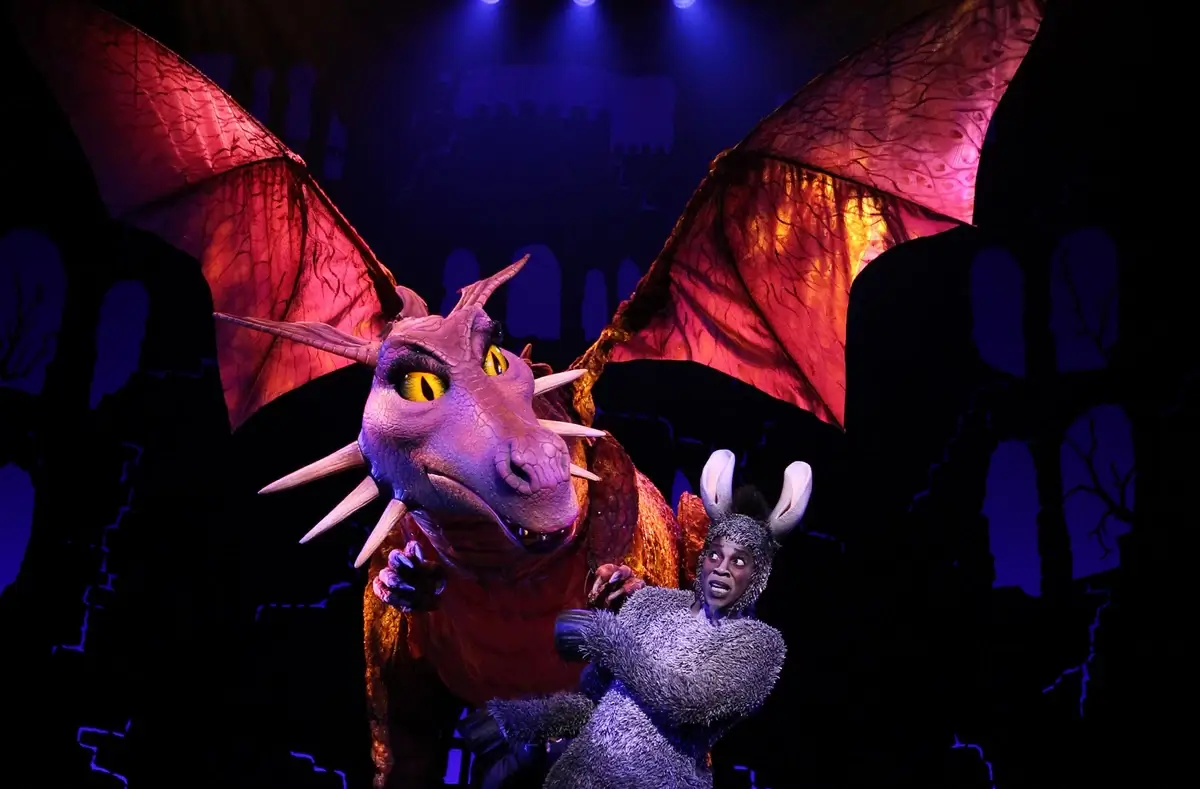
Image: sfgate.com
4. Sutton Foster’s Unforgettable Audition for Princess Fiona
Broadway star Sutton Foster’s audition for Princess Fiona was a standout moment in the casting process of “Shrek The Musical.”
Foster, known for her roles in other musicals like “Thoroughly Modern Millie,” brought a unique blend of humor, vocal talent, and emotional depth to the character. Her interpretation of Fiona played a crucial role in shaping the musical’s direction and was instrumental in its critical acclaim.
5. The Dragon’s Roar: Bringing a Giant Puppet to Life
The Dragon in “Shrek The Musical” is a theatrical spectacle, a 25-foot puppet created by The Puppet Kitchen. It required a team of four puppeteers to operate, each handling different parts of the body. The Dragon’s design was a significant challenge, balancing the need for impressive size with the practicalities of stage movement.
Unveiled in 2008, this puppet used advanced materials for lightweight construction and required over six months of development. The integration of the Dragon’s live voice, performed by an off-stage singer, adds to its lifelike presence, making it a standout feature in the musical.
6. An Ogre-Sized Set: The Complex Scenery of Shrek The Musical
The set design for “Shrek The Musical,” created by Tim Hatley, was notable for its innovative and versatile approach. It effectively transformed scenes, capturing the essence of the animated film while adapting it for live theater.
The design included a complex stage floor with multiple revolves, allowing dynamic scene transitions and enhancing the visual storytelling. This approach to set design played a significant role in immersively bringing the animated world of “Shrek” to life on the Broadway stage.
7. From Screen to Script: Adapting Iconic Movie Lines
The adaptation of “Shrek’s” film script to a Broadway musical format was a meticulous process. David Lindsay-Abaire, the Pulitzer Prize-winning playwright, took on this task, ensuring the script’s fidelity to the film while adding a theatrical dimension.
The musical, which premiered in 2008, retained key phrases and jokes from the 2001 film, resonating with fans while adding original dialogue suitable for stage. This careful blending of original and new content helped maintain the essence of Shrek, keeping the story fresh and engaging for the theatre audience.
8. A Star-Studded Original Cast: Broadway Legends Come Together
The original Broadway cast of “Shrek The Musical” in 2008 brought together a formidable array of talent. Sutton Foster, a Tony Award winner, played Fiona; Brian d’Arcy James, another Tony nominee, portrayed Shrek; and Christopher Sieber, a Broadway veteran, took on the role of Lord Farquaad.
Their collective experience and chemistry were instrumental in translating the animated characters into compelling stage personas. This powerhouse trio helped the musical earn eight Tony Award nominations in 2009, including Best Musical, showcasing the impact of exceptional casting in theatre.
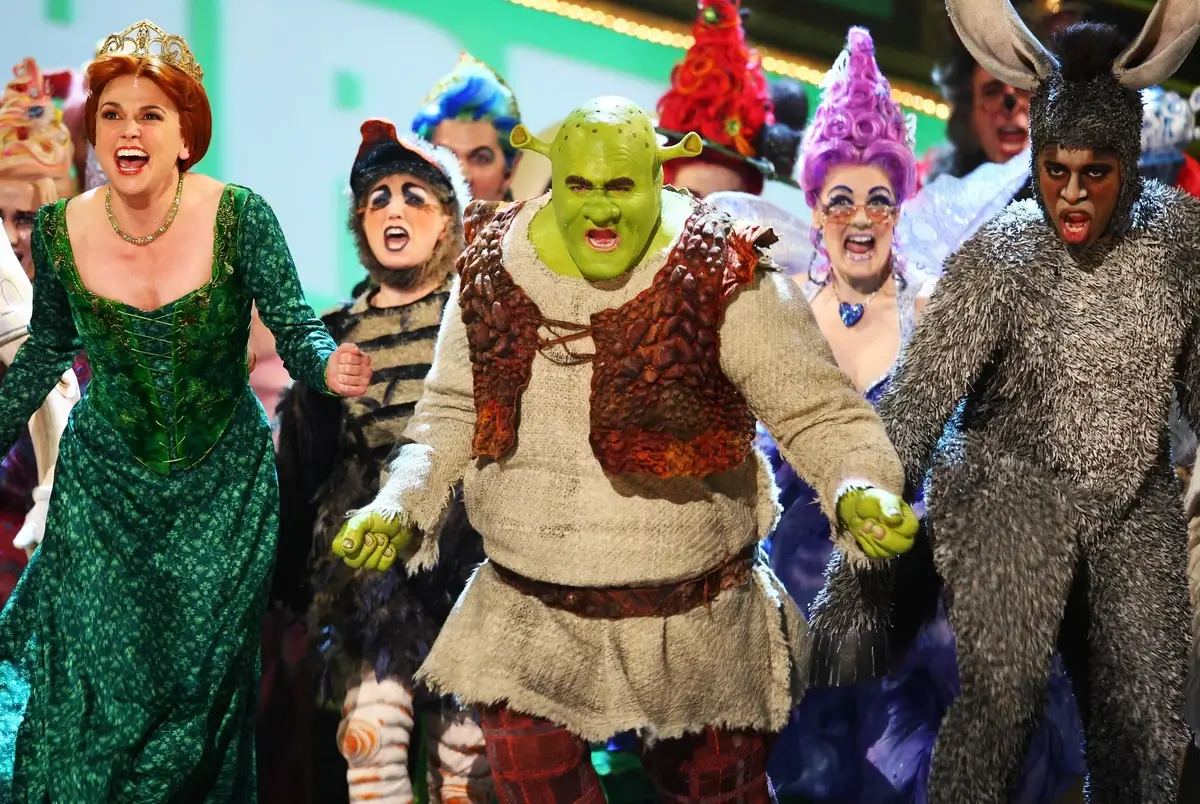
Image: pedestrian.tv
9. The Musical’s Global Reach: International Productions of Shrek
Since its Broadway debut in 2008, “Shrek The Musical” has been staged in multiple countries, including the UK (West End debut in 2011), Australia (2019), and Spain (2014). Each production adapted the original script and music to suit local tastes while retaining the core story.
The musical’s success internationally highlights its broad appeal, transcending cultural and language barriers. The international productions have contributed to the musical’s enduring popularity, making it a beloved classic worldwide.
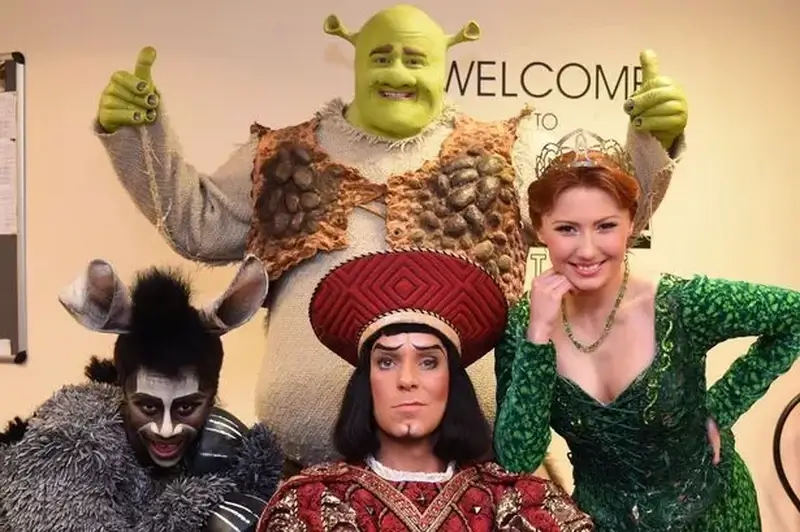
Shrek The Musical at Liverpool Empire Theatre. Image: cheshire-live.co.uk
10. Critics and Crowds: The Mixed Reception of Shrek The Musical
“Shrek The Musical” opened to mixed reviews from critics but was generally well-received by audiences. Critics praised its technical aspects and performances but had mixed feelings about its adaptation from the film. The New York Times described it as “true to the spirit of the film,” while other critics felt it lacked the movie’s edgier humor.
Despite this, the musical drew large crowds, resonating particularly with families and fans of the film. Its Broadway run lasted for over 12 months, closing in January 2010 after 441 performances and 37 previews, demonstrating its appeal with theatre-goers.
11. Breaking the Mold: How Shrek The Musical Challenges Traditional Fairy Tales
“Shrek The Musical” stands out for subverting traditional fairy tale narratives. By centering on an unconventional hero, an ogre, and mocking classic fairy tale tropes, the musical offers a fresh, modern take on the genre.
This approach, pioneered in the original film and effectively translated to the stage, has been praised for its inclusivity and message of self-acceptance. The musical’s unconventional storyline and characters offer a more relatable and diverse narrative, challenging the norms of fairy tale storytelling.
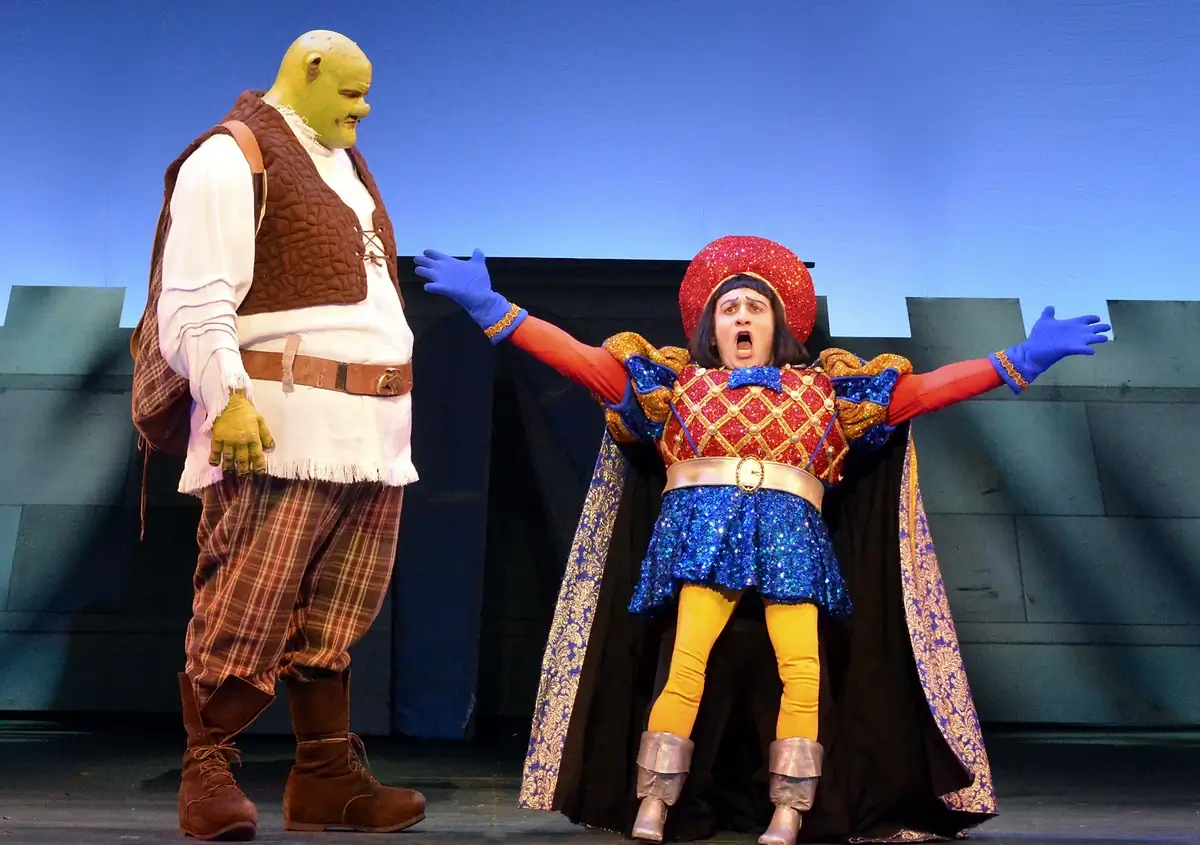
Image: laexcites.com
12. The Soundtrack’s Unique Twist: Contemporary Music in a Fairy Tale Setting
The soundtrack of “Shrek The Musical” skillfully blends contemporary music styles with the fairy tale setting. Composers Jeanine Tesori and David Lindsay-Abaire crafted songs that combine elements of pop, rock, and traditional Broadway, giving the musical a unique and modern sound.
The soundtrack, including songs like “Freak Flag” and “I Know It’s Today,” adds depth to the narrative and characters, resonating with both young and older audiences. This contemporary musical approach distinguishes the show within the genre of musical theatre.
13. Jeanine Tesori’s Musical Genius: The Composition of Shrek’s Score
Jeanine Tesori, known for her work in musical theatre, brought her compositional talent to “Shrek The Musical.” Her score blends humor, heart, and theatricality, contributing significantly to the show’s emotional depth and narrative.
Tesori’s ability to match the musical’s diverse themes with varied musical styles is evident in songs like “Who I’d Be,” which combines elements of rock, ballad, and traditional musical theatre. Her work on “Shrek” earned her critical acclaim and helped cement the show’s place in the pantheon of modern musicals.
14. Behind the Scenes: The Extensive Rehearsals and Workshops
Before its Broadway debut, “Shrek The Musical” underwent extensive rehearsals and workshops. These preparatory phases, spanning several months, were crucial for refining the script, music, and choreography. The cast and crew worked tirelessly to adapt the animated film into a cohesive stage production.
This process included workshops to experiment with different staging and performance ideas, ensuring that the final product was polished and true to the vision of the creators.
15. Shrek’s Legacy: Impact on Broadway and Future Musicals
“Shrek The Musical” has left a lasting impact on Broadway and the landscape of musical theatre. Its success paved the way for other animated films to be adapted into musicals, expanding the genre’s possibilities. The show’s innovative use of puppetry, set design, and its approach to storytelling have influenced subsequent productions.
“Shrek” is often credited with broadening the appeal of musical theatre, attracting diverse audiences and encouraging a new generation of theatre-goers and creators.
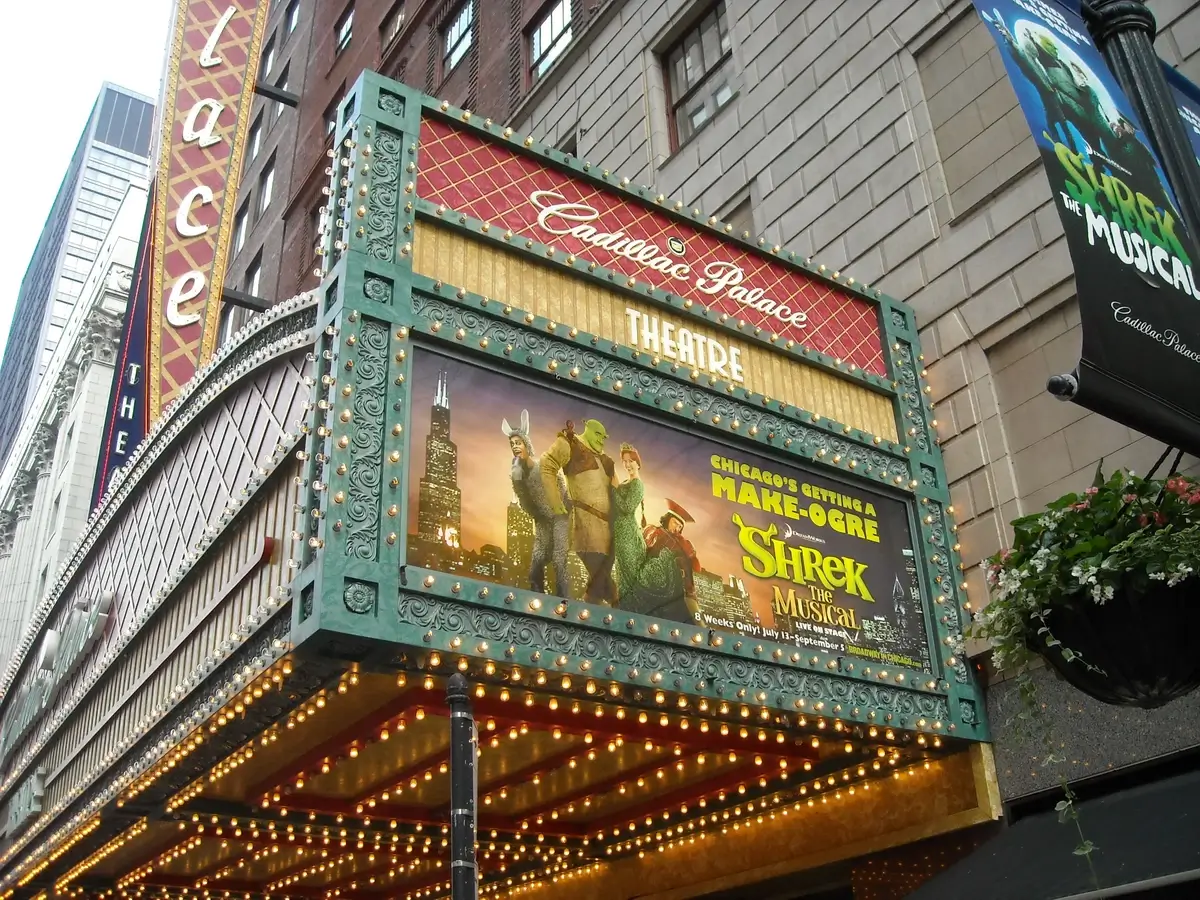
Image: broadwayinchicago.wordpress.com
FAQ
What is good about Shrek the Musical?
“Shrek the Musical” is celebrated for its innovative storytelling, impressive stagecraft, and humorous, yet heartwarming narrative. The musical successfully translates the beloved animated film’s charm to the stage, with standout features including stunning costume designs, especially the intricate ogre makeup, and the impressive 25-foot dragon puppet. The show’s music, composed by Jeanine Tesori, offers a modern twist to the fairy tale genre, appealing to a broad audience. Its inclusive message, challenging traditional fairy tale norms, and the skilled performances by a star-studded cast further enhance its appeal.
What was Shrek the Musical based on?
“Shrek the Musical” is based on the 2001 DreamWorks Animation film “Shrek,” which itself was adapted from William Steig’s 1990 fairy tale picture book “Shrek!” The musical closely follows the film’s storyline, incorporating its iconic characters and key plot points while adding a theatrical flair to the narrative and expanding upon the original material with new songs and dialogue.
What is the main idea of Shrek the Musical?
The main idea of “Shrek the Musical” revolves around self-acceptance and the subversion of traditional fairy tale stereotypes. It tells the story of Shrek, an ogre who embarks on a quest to rescue Princess Fiona and, in the process, confronts and challenges societal norms about beauty and heroism. The musical celebrates individuality, friendship, and the idea that true love is not based on outward appearances but on genuine connection and understanding.
How long did Shrek the Musical last?
“Shrek the Musical” had its Broadway run from December 2008 to January 2010. The show closed after a total of 441 regular performances and 37 previews. After its Broadway tenure, the musical continued to enjoy success with national tours, international productions, and numerous regional and amateur stagings worldwide.
How is Lord Farquaad so short in Shrek the Musical?
In “Shrek the Musical,” the character Lord Farquaad is portrayed as comically short, a creative decision achieved through a clever costume and performance technique. The actor playing Farquaad wears knee pads and a specially designed costume that creates the illusion of a very small stature. The actor performs on his knees, with fake legs attached to the costume to complete the illusion, adding a humorous and distinctive element to the character’s stage presence.
How old is Shrek in Shrek the Musical?
While “Shrek the Musical” does not explicitly state Shrek’s age, it is generally inferred that he is in the same age range as the character in the original film. In the 2001 movie “Shrek,” it’s implied that Shrek is in his late 20s to early 30s. This age range is suggested by his level of maturity, life experiences, and physical appearance, and it is consistent with the character’s portrayal in the musical adaptation.


